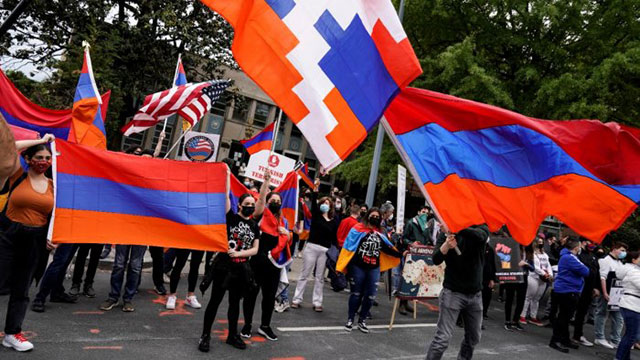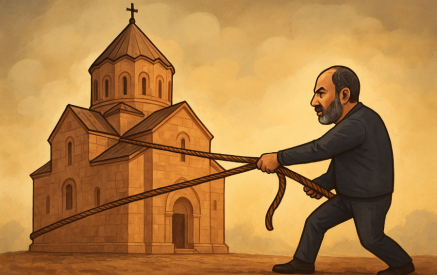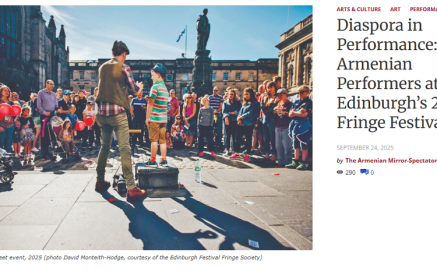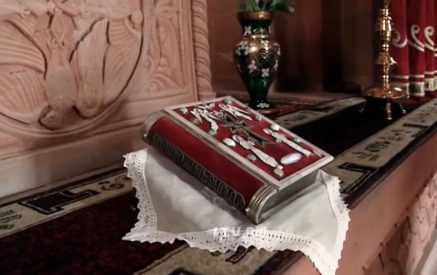by Stepan Piligian
The Armenian Diaspora was essentially created as a result of oppression. The early communities in the United States formed prior to the Genocide were a result of a lack of economic opportunity in the Ottoman-occupied areas or as a reaction to the massacres under the Sultan Abdul Hamid and the early years of the Young Turks (Ittihad ve Teraki). There were communities in the US prior to the Genocide, but the explosion of infrastructure and population took place after World War I with the forced expulsion of the survivors of the Genocide. Many found their way to the shores of a welcoming America.
My own paternal grandfather was typical of the pre-genocide immigration. He came to Massachusetts as a single man (18 years old) in 1913. His parents sent him here to escape the anticipated induction into the Ottoman army. He worked in Indian Orchard and lived in what amounted to rooming houses with other single Armenian men, many of whom were from his village of Koch Hisar in Sepastia. They all intended to return to the homeland once the risks passed. Armenians were used to weathering these storms created by evil forces bent on their destruction or world events. He returned along with over 5,000 others to fight in the Armenian Legion. His future wife (my Adanatzi grandmother) was forced to live in Egypt for two years at the age of nine to escape the Adana massacres. She returned with siblings to brave the challenges of surviving the horrors of 1915. After the conclusion of the war and the final betrayal of the allies in Cilicia, they did not return.
Read also
This time it was different. They had been removed from their homeland of centuries and forced to bring what remained of their families and their culture to a new land. Their priority was the survival of their families and the retention of their heritage. For some, the transition was reasonable as family units arrived and went about the tasks of establishing roots. For others, separated by the atrocities, it would be years before their families would be reunited. My wife’s aunt was separated from her mother for several years before they could reunite in Chicago. They persevered and played by the rules with gratitude for the opportunity to live in freedom.
These individuals built families which in turn became communities and collectively became the diaspora of the United States. We have often referenced 1965 as an important reflection point in the history of the diaspora. It was the 50th anniversary of the Genocide and has become known as the “re-awakening” of political and advocacy activism in our communities. The year 1991 also changed the direction of the diaspora in terms of responsibility and focus. The actual transformation occurred from 1988 to 1991. With the tragic earthquake, the diaspora responded with unprecedented support for the still Soviet state of Armenia. In parallel with a growing political movement seeking the independence of Armenia and Artsakh, the diaspora engaged with the homeland on levels unheard of just a few years earlier.
Prior to this timeframe, the diaspora in the US had been primarily focused on building its own infrastructure of churches, centers, schools and youth programs. There had been, however. several major efforts to support our brethren in the Middle East, the most noteworthy being the relationship with the Antelias See of Cilicia in Lebanon. With the emergence of the independent states of Armenia and Artsakh, the diaspora took on an additional responsibility—the homeland. While it was not constitutionally mandated and at times the “pull” beyond financial resources was limited, the diaspora has been all in with private and public partnerships to advance all aspects of society in the twin states.
Worldwide advocacy has promoted Genocide justice and support for Armenia and Artsakh. It is an almost overwhelming responsibility for the diaspora to see their romantic visions of a free Armenia blurred with a 30-percent unemployment rate, corruption and political isolation. How is this possible from a people scattered to all edges of the world a few generations ago only to blossom with a credible respected presence in virtually every corner of this earth? These are the cards we have been dealt. The balance between investing in the diaspora and the homeland has been the challenge for over 30 years. While the process remains the same with communities in the diaspora and the homeland now an integral part of that equation, the dynamics of that “community” have evolved significantly.
It is interesting to note how certain words have widely varied meanings in our hyphenated life in the diaspora. Take the word “assimilation.” It generally refers to the absorption of one culture into another—a merger of sorts when usually one culture dominates. Assimilation is a key component of American culture. Cultures from all over the world come to the US and engage in something new. It suggests that you will lose some of what you came with as you become a functioning part of American society. It begins usually by periods of isolation and discrimination while the assimilation process reaches some level of critical mass. The Irish were subjected to this for many decades. The Armenians didn’t look like western Europeans and were subjected to disrespect. The Black community and Native Americans have long been victimized. The extent of the struggle seems to relate to how quickly cultures “assimilate,” but the question remains to what extent are they assimilating?
The level of integration into American society, for example economically and linguistically, enables what we have come to call the hyphenated American. When we retain our heritage and embrace this society, we are known as Polish-Americans, Black-Americans and Armenian-Americans. Where is the balance? How is it managed and how does it relate to the dual responsibility of the Armenian community here in America? The term “assimilation” strikes some level of fear in the Armenian community. Although the core definition remains the same, the application and implication are quite different. Armenians in America seem to believe that we are defying sociological norms with the strength of our presence in this country. It is true we have advanced to a level of credibility through talent, financial prowess and education that impact many segments of our society here in America. We are builders and contributors. As a result, we are respected and gain a level of influence.
I always like to look closer at the communities themselves that fuel the emergence of such capability. If we, for the sake of this discussion, count the survivor generation as the first generation in the American Diaspora, then we are currently in the fifth main generation with four born in this country. Our communities and organizations should be filled with American-born Armenians who are at least third generation (my children’s peers), but they are not. The reality is that our communities have been replenished by the immigrant groups of Armenians. The primary influx point was the draining of our Middle East communities; the nationalization impact in Egypt in the late ‘50s and ‘60s; the strife in Iraq and Syria in the ‘60s; the Lebanese Civil War of the ‘70s; the revolution in Iran in the late ‘70s, early ‘80s; the Baku pogroms in the late ‘80s, early ‘90s; and finally the instability and economic issues in Armenia.
Each of these difficult events has brought with it the silver lining of talent from these well-established Armenian anchor communities. Our schools, churches and other institutions have been constantly replenished with dedicated people who filled the void. Is there another immigration wave? Many of those born here have become silent victims of assimilation. They are fine people who live productive lives, but that life does not include a functioning Armenian identity. This has been happening for generations. I remember my father telling me of a survivor generation individual who wanted to live only an American life. It is a very personal and emotional issue, but we need to look at this purely from a social and communal perspective.
The job in the diaspora has always been to sustain itself which means focusing on identity building mechanisms. Only through strength can it assist Armenia and Artsakh. It is a very difficult balance to maintain. When our communities were densely built, a church and center worked. With an increasing secular world and Armenian families subject to the same stresses as others, we need new methods to reach the home of Armenians where the family to community to diaspora equation begins. Many of these suggestions have been discussed in previous columns. The idea of a young Armenian kid identifying with his or her heritage is a choice in the diaspora.
Our entire family and communal structure should be designed to make that an easy choice, but no matter how many years they go to an Armenian camp or church, they will make that decision one day. An additional “tool” is available to this generation. Help your children develop a relationship with Armenia. That does not mean simply take a family trip. Building an identity relates to their needs being found in Armenia. Once that emotional bond is made, the balance we seek in assimilation will be assured. This is happening today in our communities, but it must be significantly expanded. If the Armenian family is challenged by the dynamics of American society, then you still have an opportunity to make that connection and recapture what was not available here.
The Armenian community is not significantly at risk in the immediate short term, but we do not want to evolve into a shell of our former selves that stays afloat with foundation grants and people attending bazaars to satisfy their Armenian “craving.” Fundraising is not an indicator of communal health. As people drift to the outer periphery, donations in lieu of participation become easier and a value taught to their children. There is no substitute for presence. If the methods don’t work, demand change in an appropriate manner. Don’t walk away. The stakes are too high. The chain of sustainability starts with you.


























































